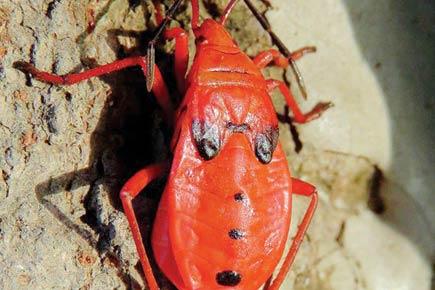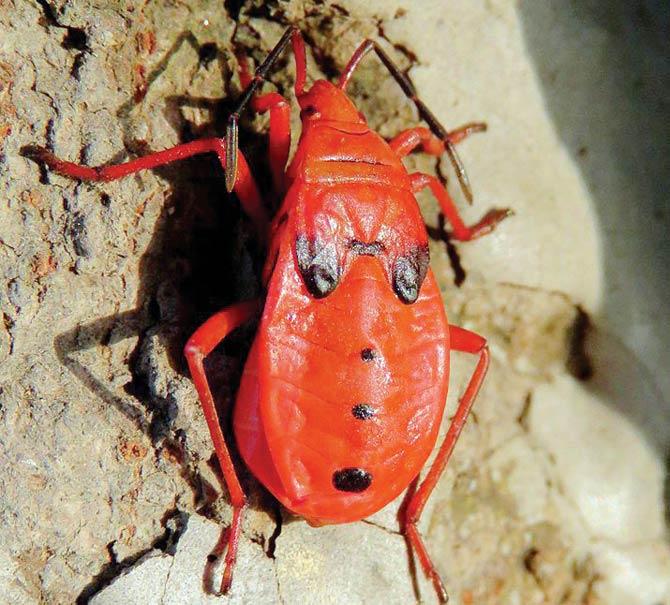Last Sunday, I was strutting like a peacock in the ruins of the Vasai Fort with a copy of sunday mid-day in hand

 Last Sunday, I was strutting like a peacock in the ruins of the Vasai Fort with a copy of sunday mid-day in hand. It was the right time of the year, and I took the opportunity to share my column about the Red Silk Cotton tree with the 30-odd history enthusiasts who had joined me, keen to decipher the fort’s long-winding lineage. I had roped in my friend Pascal Lopes, a local expert on the mysteries of the Vasai Fort. To everyone’s delight, besides historical stories, there were dozens of Semal trees to relish, in all their glory and in full blossom. Those who had already read or surfed through the article looked for the birds I had mentioned and, on sighting them, clicked many pretty pictures.
Last Sunday, I was strutting like a peacock in the ruins of the Vasai Fort with a copy of sunday mid-day in hand. It was the right time of the year, and I took the opportunity to share my column about the Red Silk Cotton tree with the 30-odd history enthusiasts who had joined me, keen to decipher the fort’s long-winding lineage. I had roped in my friend Pascal Lopes, a local expert on the mysteries of the Vasai Fort. To everyone’s delight, besides historical stories, there were dozens of Semal trees to relish, in all their glory and in full blossom. Those who had already read or surfed through the article looked for the birds I had mentioned and, on sighting them, clicked many pretty pictures.

The cotton pyrrhocorid bugs get the name of Red cotton stainers since their red bodies get crushed when the bolls of cotton they eat are harvested
ADVERTISEMENT
This scenario reminded me of a similar nature-cum-photowalk I had led last year for a bunch of collegians in the Aarey Milk Colony. Some of my outdoorsy friends had joined, along with their kids, and we were under a flower and bird-laden Semal tree. All those with cameras were going click-click, but the kids were on their own trip. Their eyes were searching for the waxy Semal flowers and twigs to play with. A shriek from one broke this peaceful excitement. He screamed, “Run, there are blood-sucking bugs here”. The statement confused me and the team momentarily. But, within a fraction of a second I realised that the kid must’ve seen a bunch of red silk cotton bugs.
The nervous laughter from the kids broke the tension. Everyone rushed closer to me, when I picked up a bug and let it calmly wander around on my hand. I complimented the kid on identifying the creature as a bug, (Order Hemiptera), and that led to some high-fives. I followed this up with a long monologue informing the group that these insects belong to the Family Pyrrhocoridae. They are commonly called Pyrrhocorid bugs, firebugs, red bugs, silk cotton bugs or, most accurately, the cotton stainer bugs. There are over 300 species of these gregarious (group-living), plant-feeding insects, found mostly in the tropics and subtropics. They are fairly common, bright red coloured and oval in shape, ranging from 8 to 18 mm in length. They all exhibit polymorphism, wherein two or more visibly different forms exist, such as winged or wingless. Their eggs look like miniature chicken eggs. The nymphs or young bugs (instars) are wingless.
The name cotton stainers is prevalent as their red bodies get crushed when the bolls of cotton they eat are harvested. These stains are difficult to remove and their feeding cuts the cotton fibres. The Genus Dysdercus is deemed as one of the most destructive cotton pests in North America and India. Historically, piles of sugarcane were laid between rows of cotton, Ocra, Hibiscus and orange trees to attract the red bugs and then destroyed with hot or soap water. Now, dusts and sprays are used for control.
But, one must realise, not all red bugs are destructive. In India, the Dindymus larvae feed on termites and adults prey on flies. Most commonly, we sight the black or brown-winged adults in mating pairs attached end to end, walking around like coaches of a tram. Sadly, besides their impact on agricultural produce, their role and ecological associations are poorly documented. So, here is your opportunity to spend this summer vacation observing, photographic and finding out the predators of the cotton stainers.
Write in to Anand Pendharkar at sproutsenvttrust@gmail.com
 Subscribe today by clicking the link and stay updated with the latest news!" Click here!
Subscribe today by clicking the link and stay updated with the latest news!" Click here!







